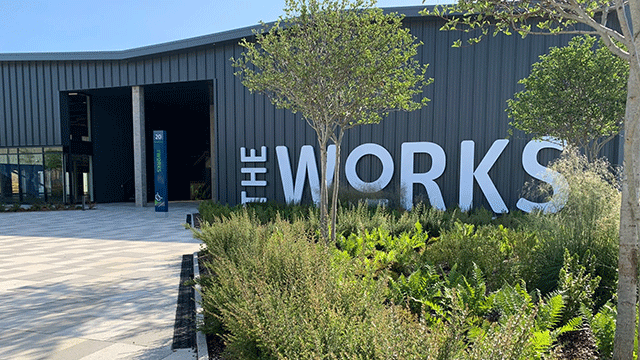Michael Foster
Yesterday’s upstarts can be today’s stock market stars and tomorrow’s blue chips. So the argument runs — right across British industry and into the estate agency world where Baker Harris Saunders hopes it is bang in the middle of the great progression.
Since coming to the stock market at 170p last November, BHS shares have risen to 395p, valuing the company at around £45m. It has expanded from its City base into the West End by the takeover of Alan G Hood and Bailey Posner, and harbours plans to get representation in major cities round the world after kicking off in New York through a deal with Richard Sykes & Partners.
BHS also started the long-awaited entry of purely commercial estate agents on to the stock market. The recent float of Debenham Tewson & Chinnocks shows that even the historic agencies are finding it difficult to resist following the trend.
BHS was founded by Michael Baker and Simon Harris in the dark days of 1976, when the property slump never seemed to be ending. Mr Baker (now chief executive) started his career in 1964 with Richard Ellis and joined Richard Saunders in 1970. Simon Harris started out with Edward Erdman in 1971, and got involved with opening their City office five years later.
The relationship between Mr Baker and Mr Harris is not unlike that between cricketers Mike Gatting and Ian Botham, with Mr Harris often on the sharp end of deal-making and Mr Baker taking more of a strategic view. Richard Saunders is nominally in charge of both of them as chairman of BHS: he is roughly 10 years older (about 50) and joined the gang in 1977 after working with Mellersh & Harding, Richard Ellis and Richard Sauders & Partners (which he founded).
Looking back in life, some people would like to claim that they founded companies with a grand strategic plan in mind: “We didn’t,” says Mr Harris. “We just wanted to do our own thing.”
The going was tough to start with. A start-up bank loan was cut back from £50,000 to £25,000 owing to credit restrictions, and the fledgling firm was heavily reliant on deals from a few friends.
Instructions on two schemes eventually took Baker Harris Saunders towards a position where they now handle around 15% of City business. The first was Whitbread and Trafalgar House’s 440,000-sq ft scheme on Chiswell Street, where Mr Baker had been involved for a number of years. This was sold for £93m to BP: around a fifth of BHS’ pre-tax profits of £232,000 in the 17 months to April 1982 came from Milton House (now Brittanic House West). The year after, profits dipped to £99,000 owing to a shortage of major projects.
BHS was later involved in the planned development of the Helical Bar scheme on Chiswell Street also bought by BP. The firm continues to enjoy a good relationship with BP. It does not take a genius to work out that, as and when BP decide to move out of their existing Britannic House HQ, BHS may be in line for some extra fees.
As regards its second big scheme, BHS advised Greycoat and Standard Life on the purchase of land from the Port of London Authority, which later became Cutlers Gardens. After receiving an initial £5,000 fee payment, BHS became joint letting agents. The team, led by Simon Harris, probably showed around 500 prospective tenants around the 500,000-sq ft blocks; after a sticky start they were occupied between 1982 and 1984. With the help of Cutlers, and other instructions, BHS’ profits grew to £292,000 by 1983-84. Another quantum leap took the total to £568,000 in 1984-85, on turnover of £1.78m.
By now, BHS was in the vanguard of a trend which has led to agents getting more involved in the creation of the right project for the right market. The thought which goes into such matters is far greater than in the 1960s when assorted shoe boxes with tight slab-to-slab heights were thrown up by developers who were keener to make a fast buck than a good building. It is fitting that BHS should now be advising on all the big developments on London Wall — a grisly symbol of the 1960s property boom.
BHS is also right in the middle of a cosy club of agents, architects, quantity surveyors and contractors who follow each other round the major schemes in the City. The partnerships shift in membership, but the same names pop up time and again.
Around 1985, BHS started negotiations to link up with the West End firm of Fletcher King, but these eventually broke down. FK has also found its own way on to the stock market; its shares have gone from 175p at the time of its December 1986 float to today’s 265p, which values it at £21 1/2m. That firm has entered an association with the 160-office US realtors Grubb & Ellis, and bought specialist retail agents Peter Hunter & Co.
BHS incorporated in its own right in December 1985; it formally decided to go public the following April, with profits of £800,000 (on turnover of £2.35m) under its belt. By then Hanover Druce and Connells were the two agents with the biggest commercial divisions on the stock market, but no pure commercial agent had taken the great leap forward. Resolutions by the RICS to let member surveyors become directors of their own companies were put forward the following July, though the rule changes took an eternity to get through Privy Council.
Well before the float, Messrs Baker, Harris and Saunders had been joined as directors by ex-Jones Lang Wootton man Jonathan Edwards (in 1981), now managing director; Nick Baucher (1977, ex-Richard Saunders, and marketing guru); Richard Harraby (1977, ex-Artagen, and professional services); and William Peach (1984, ex-Richard Ellis, and agency).
By 1986, the total number of BHS employees was 44. An impressive list of 18 landlord clients ranged from Granada to Greycoat; from Stockley at Paternoster Square to St Martins at London Bridge City; from Wates to Wimpey. And not forgetting Land Securities. BHS also advised Peter Palumbo on his grand plans for 1 Poultry.
Instructions recently received from 13 top tenants included names like Barclays Bank, First Interstate, Shearson Lehman and Schroders.
A property management division, started in 1978, extended to 47 buildings with a rent roll of £23m by 1986. A research department, begun in 1983, was offering the comprehensive Baker Harris Saunders City Development Survey.
A research tome has just been published by BHS, with merchant bank County NatWest, examining supply, demand and debt in the City office market.
In explaining their recent growth, BHS stated in their prospectus that: “The directors believe in offering personal service at a senior level at all times. Coupled with their policy of specialisation, they consider that this philosophy, will continue to be a significant factor …”
A breakdown of fee income for 1985-86 showed agency work bringing in £1.84m of turnover, professional work £325,000 and management £189,000. Fee structures are roughly in line with estate agency norms. Letting transactions in 1985-86 covered around 715,000 sq ft (against 400,000 sq ft in 1981-82); the forecast for 1986-87 was 1 1/2m sq ft, with a lion’s share in the first half of the year coming from London Bridge City (540,000 sq ft). That led to a profit forecast of £1.6m and a dividend promise of 2p a share.
As is invariably the case with people businesses, BHS’ balance sheet strength was limited ahead of the float. Net assets were £178,000; the bank overdraft of £3,000 compared with cash of £332,000; and the creditors/debtors ratio was £569,000/£256,000 in April 1986.
Cash balances by the following September had grown to £696,000. The company’s main office was the 5,000-sq ft Blackwell House in the shadow of Guildhall, carrying a rent of £75,000 a year, and supplementary premises comprised 999 sq ft on the third floor of 2-9 Masons Avenue, EC2 (£34,100).
Brokers Rowe & Pitman (now Warburg Securities) advised on the sale of BHS’ shares by tender at a minimum price of 150p in October. As is usually the case with Warburg, the issue was organised with military precision: it was over-subscribed 4.4 times at a price fixed at 170p, and the market price hit 210p soon after first dealings.
Warburg are doing even better with the tender offer for Stuart Lipton’s Stanhope property company. By last weekend the tender price was fixed at 250p against a minimum of 180p, and early dealings were expected to be 300p.
The BHS directors sold about a million shares at the time of their launch, raising £1.7m; around £2.5m went to the company. The directors’ residual 75% stake was worth £12 3/4m at 170p a share, working out at nearer £30m today. By a narrow margin, Simon Harris retains the most shares, now worth £6m.
Ever since their float, business has gone great guns at BHS. Profits for 1986-87 eventually came out £400,000 over forecast at £2m, courtesy of the “Big Bang” boom in City rents, for which the property industry was remarkably underprepared. Even now valuers are struggling to keep up with events.
BHS’ biggest new letting instruction for 1986-87 was Greycoat’s 350,000-sq ft scheme at Charing Cross, while it acted for solicitors Cameron Markby on the 100,000-sq ft Sceptre Court. BHS also did 750,000 sq ft of professional work, including work on a rent review for Barclays Bank on 104,000 sq ft of space at Fleetway House, Farringdon Street.
In April this year, BHS lured Michael Dix from Morgan Grenfell Laurie to head a finance division. BHS does not aim to supplant the City in setting up complex finance packages, but it aims to put the right parties and portfolios together. BHS is a committee member for both the Barkshire Committee and the PINCs schemes.
Longer term, BHS is ready to consider advising on share transactions for both property companies and single buildings as potential Stock Exchange members for the purposes of unitisation. Not that stockbrokers are likely to welcome agents into their midst.
Moving outside the City
Expansion out of the City of London was an early priority for BHS. It had done the odd deal in the West End, and even handled Allied Irish Bank’s acquisition of a 75,000-sq ft HQ in Uxbridge shortly before coming to the market. But agency acquisitions were needed.
Last July BHS tied up the purchase of a small West End firm, called Alan G Hood, for £326,817 in shares. Founded in 1976, it made £8,000 on turnover of £186,000 in the year to December 1986, and £39,000 on turnover of £154,000 during the following six months. Clients included John Mowlem, British Aerospace, Dee Corporation and British Steel.
Alan Hood has now joined the BHS board. He happens to be a leading light (this year’s British Chapter president) in FIABCI, the international property federation, and there is a good chance he will help BHS expand associations abroad.
Hong Kong and Tokyo are early targets, following BHS’ link with Richard Sykes & Partners in New York three weeks after the Hood deal. Mr Sykes left Richard Ellis in 1985 to set up his firm: it has British companies like Kleinwort Benson, BP and The Economist as clients, and a number of Americans. Michael Baker says that the different financial set-up for Sykes and BHS, meant it did not make sense for them to merge; both sides will doubtless benefit from cross-referrals, though Sykes has some way to go to get the clout in New York which BHS has in London.
Another BHS building block has just fallen into place with its purchase of the West End firm of Bailey Posner for an initial £4m, which could rise to £6 1/2m if profits really take off. The consideration was the issue of 1m new shares at 360p, half of which were placed in the market to raise cash for the vendors, plus 2.7m convertible deferred shares.
During the negotiations, BHS referred to themselves as “bed” and Bailey Posner as “breakfast” — code words designed to keep the talks secret. Someone forgot to take “breakfast” out of the offer document before it was published, so BHS shareholders were surprised to read: “The costs and expenses relating to the acquisition of Breakfast which are payable … are estimated to amount to approximately £125,000 (exclusive of VAT).” Advisers Warburg were not amused.
Bailey Posner was formed in June 1983 in the West End, and established itself as a junior version of BHS. Its early clients were the Grosvenor Estate, Allied Dunbar and UK Provident. It has property companies like Imry, Warnford and Laing as clients, and currently handles two major schemes for London & Edinburgh at Curzon Street and St James’s Square (with London & Metropolitan).
The partners are Justyn Bailey (aged 32), formerly with Hillier Parker and Anthony Lipton; Richard Posner (39), also with Anthony Lipton; and Chris Burrows (34), who worked for Knight Frank & Rutley, joining Bailey Posner in 1985.
Bailey Posner made a pre-tax profit of £366,000 on turnover of £630,000 in the year to May, though that total was after deducting a notional directors’ remuneration of £150,000. Net assets were £205,000. The firm is now being merged with Alan Hood to form Bailey Posner Hood. BHS also used the opportunity to smarten up its profit-sharing scheme.
BHS shares were barely affected by the Bailey Posner purchase, though its prospects were enhanced by the deal. Brokers estimate that the company is capable of bringing in profits of £3m next year, which would put the shares on an earnings multiple of 21.
That rating is about in line with Fletcher King and Debenham Tewson & Chinnocks. Fletcher is regarded as a fast-growing smaller agent like BHS, and DTC has potential for improving a stodgier profits record, courtesy of its client base and reputation.
Hanover Druce has a slightly higher rating, courtesy of its loyal fan club; Sinclair Goldsmith’s and Connells’ shares are on lower multiples of around 18.
A buoyant property market means that all our quoted agents should continue to keep these ratings, which are at a premium to the stock market as a whole. In the City, Simon Harris says conditions are “hot but realistic”; the highest rent so far achieved is no less than £61.50 per sq ft, and undersupply of space still exists in the wake of the Stock Exchange Big Bang. Yields for standard office investments could well be getting below 5% again; the research tome just produced by BHS and County NatWest has gone to great lengths to prove that there is little need for alarm in the City development market: “86 1/2% of the proposed developments are being carried out by securely financed organisations,” it says.
BHS does not think that Olympia & York’s Canary Wharf project will threaten the City office market: “City users will want to stay in the City,” says Mr Harris. “That includes solicitors and all the people who serve them. All the people who are in the market for space now.” He points out that the costs of renting an office are small compared with the expenses of occupying it and keeping equipment up to date; the costs are even smaller compared with the rewards from setting up the right operation. Just so long as stocks and shares keep booming.
BHS could soon be looking for new premises in its own right. All its leading lights are happy with their lot, and the stock market is happy with them. Surely the likes of Savills and Jones Lang Wootton will not be able to resist the idea of getting their own quotes much longer?










